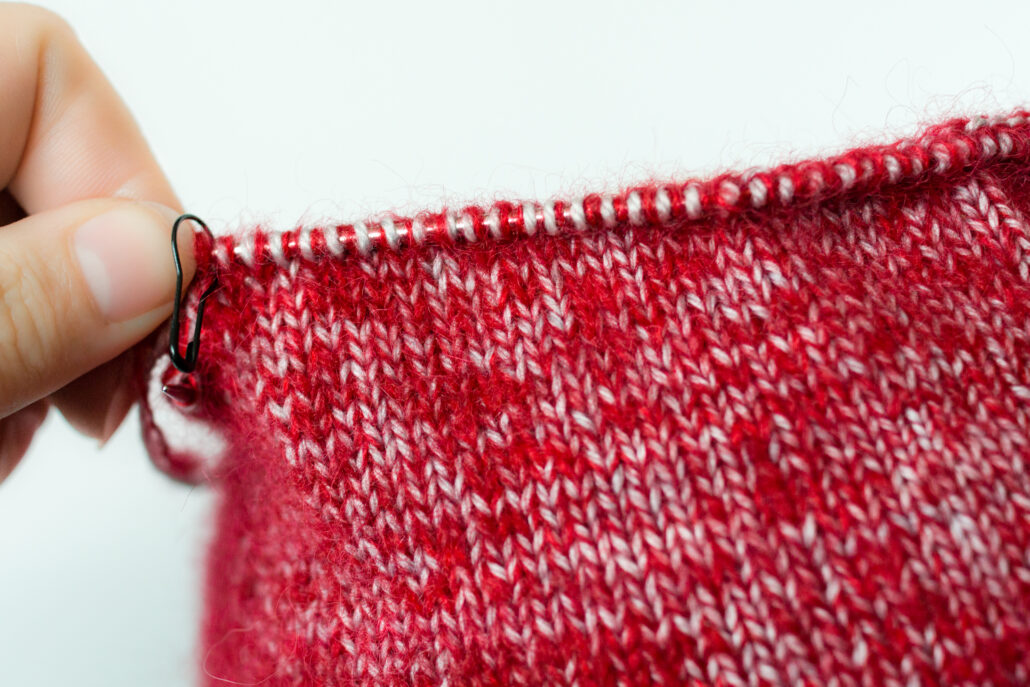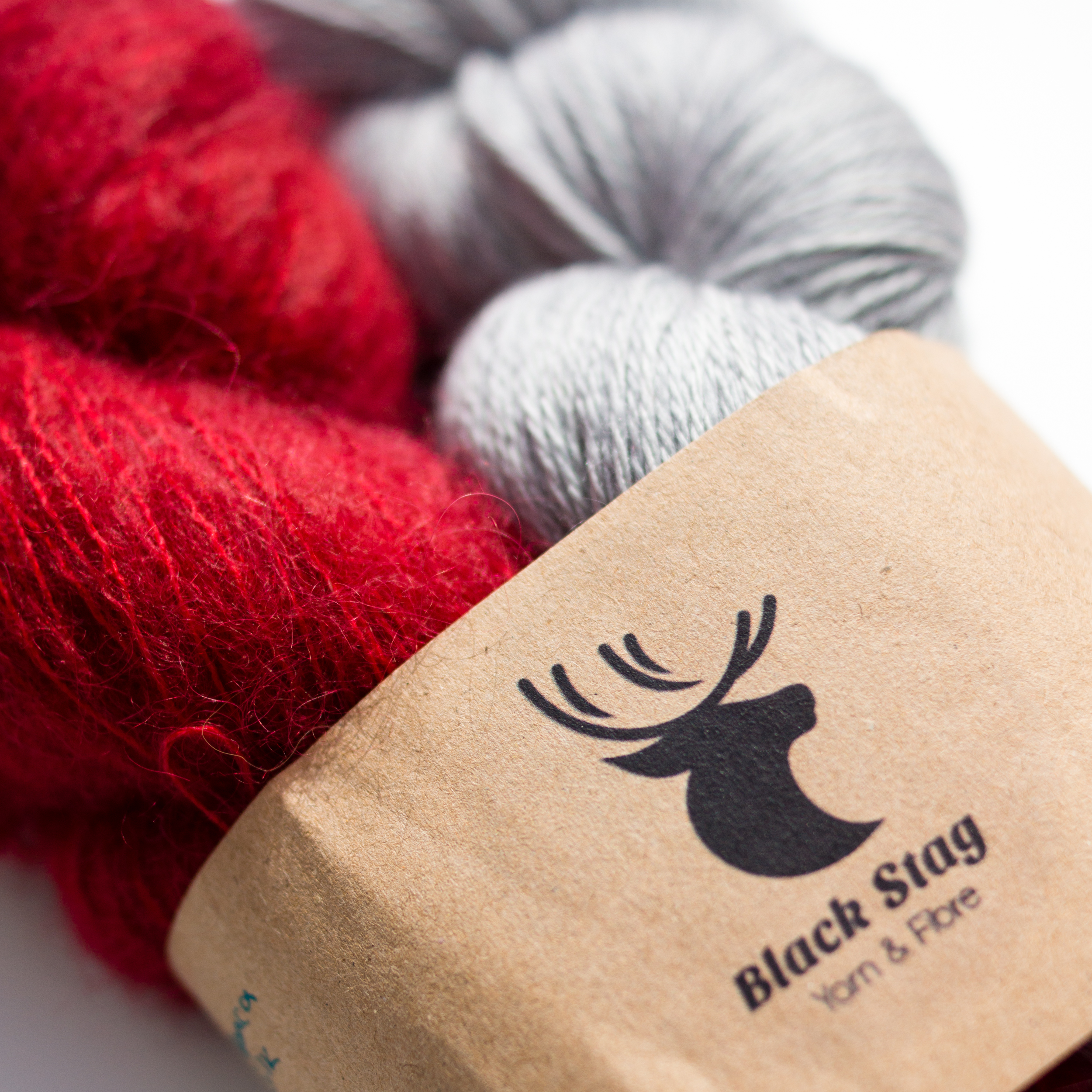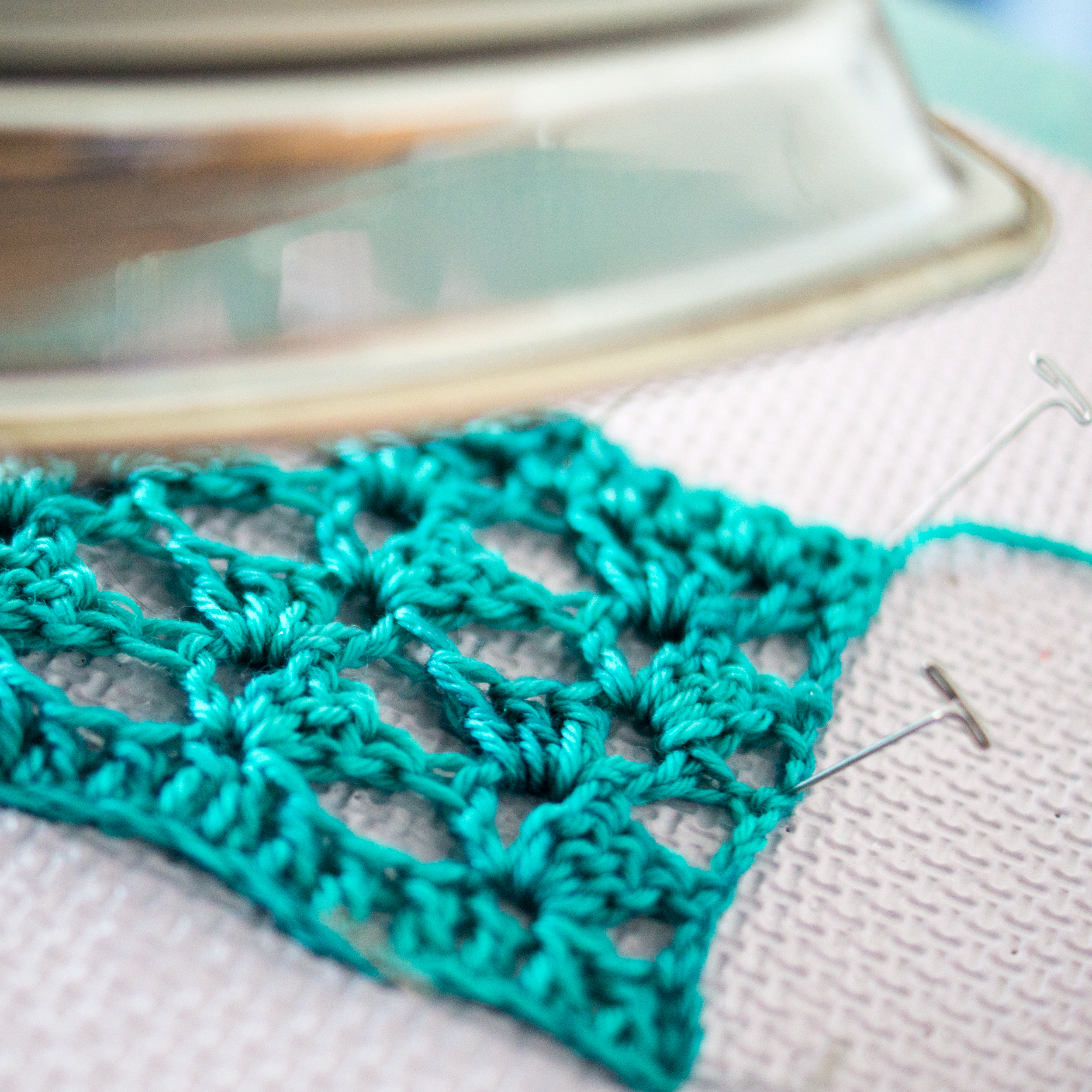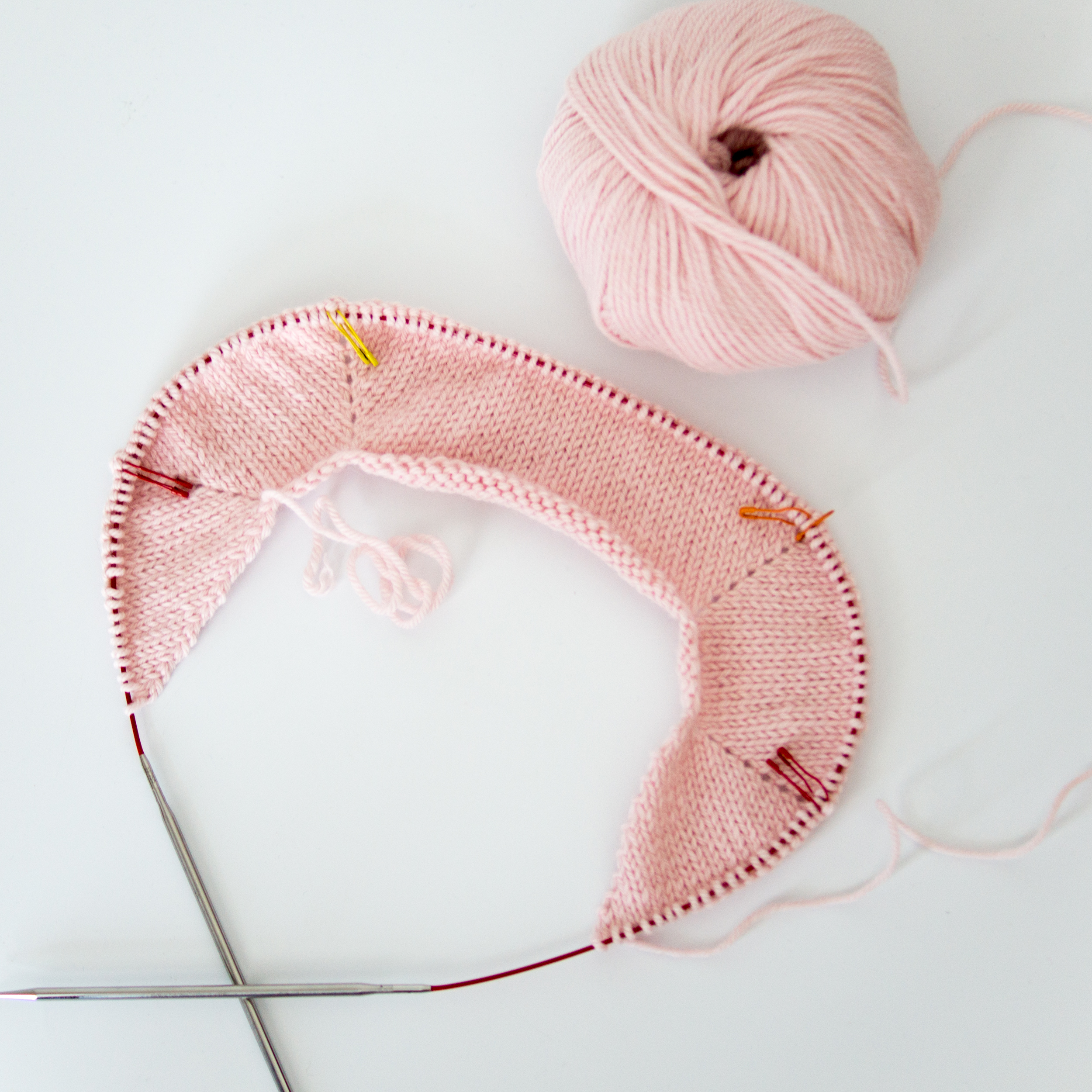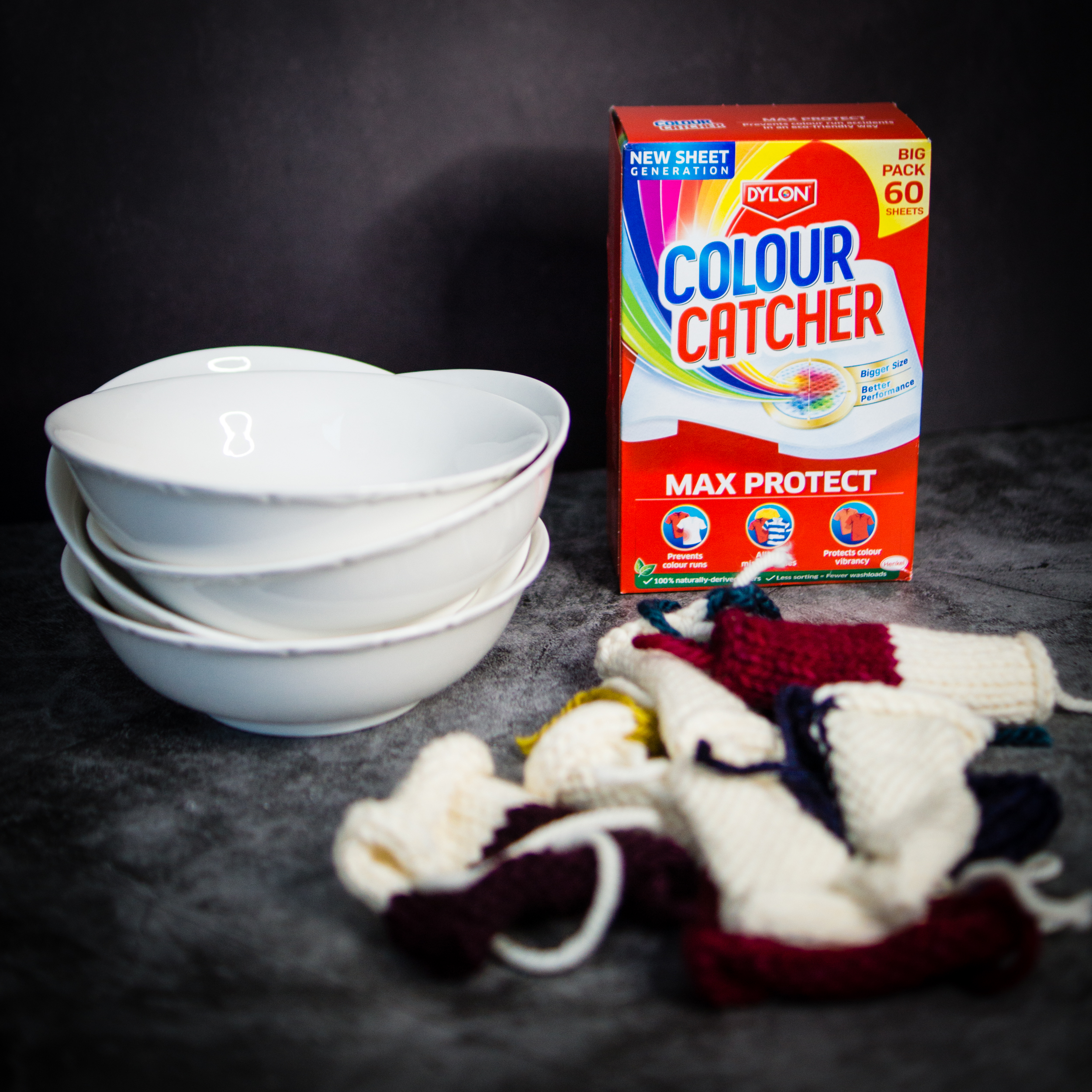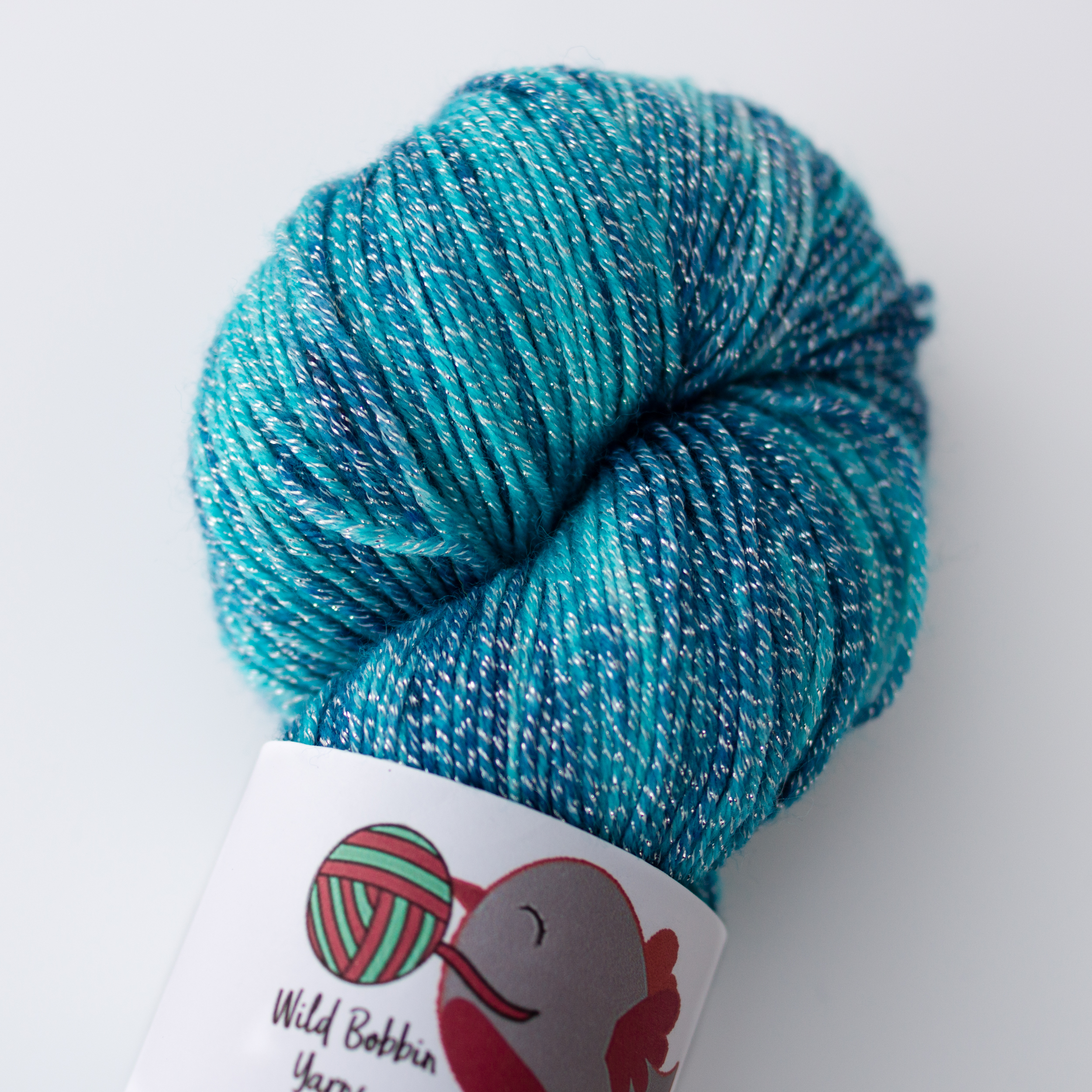Note: I was gifted the yarn described in this post in exchange for my honest opinion of it. I was not paid to write this blog post and I retain full editorial control.
A little while ago I discovered Black Stag Yarn on Twitter. Drawn in by deeply saturated jewel tones and musical colourway names, I made an impulse purchase and was thrilled to discover the colours were as good in person as they were on-screen. I went back for more almost immediately. So, when Sam asked me if I’d like to review a pair of new bases she was introducing, I had to say yes.
May I introduce you to the Soulmate collection.
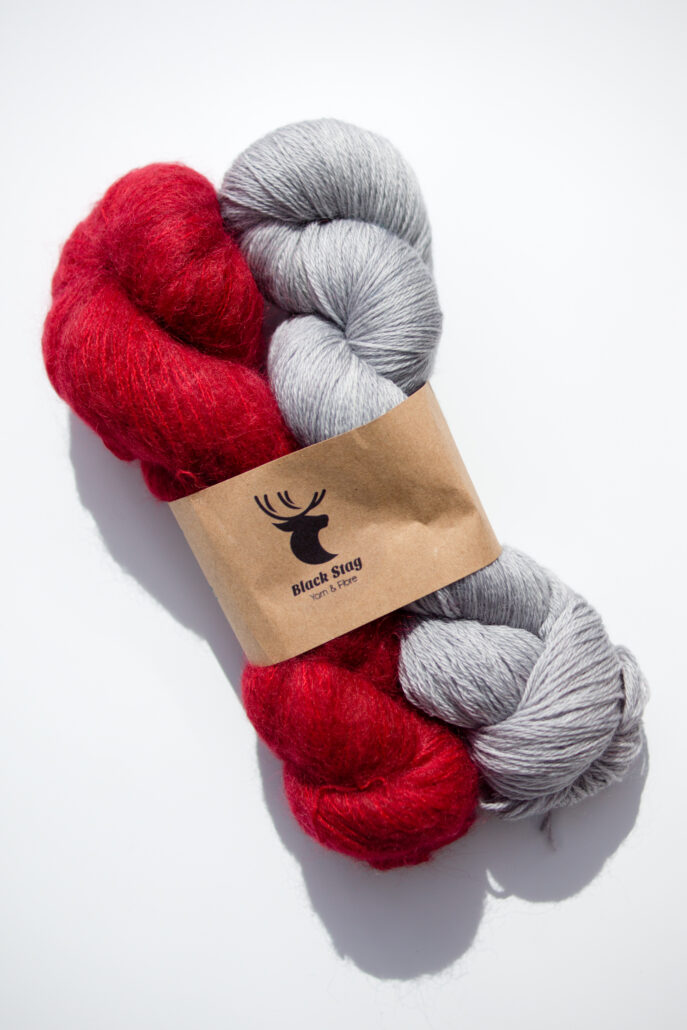
Sometimes two yarns, while beautiful and useful in their own right, do something magical when you hold them double. Whether it’s blending texture, colour, or both, holding the right yarns double opens up a whole host of opportunities to put your individual mark on your work.
Holding a strand of laceweight fluffy yarn (such as mohair or suri alpaca) double with a strand of wool has been having a bit of a moment for a while now, and it’s really easy to see why. The fluff adds a beautiful halo, increases the overall weight of the yarn, and provides some sheer cover for those little gaps between stitches, letting you work at a looser gauge for a faster knit. It’s a technique I’ve used before, both when designing (such as with Rosehill or Halo) and when knitting from others’ designs.
These two yarns were carefully selected for exactly this purpose – but they also hold up individually. Just like real soulmates.
Doves are only pigeons with good PR
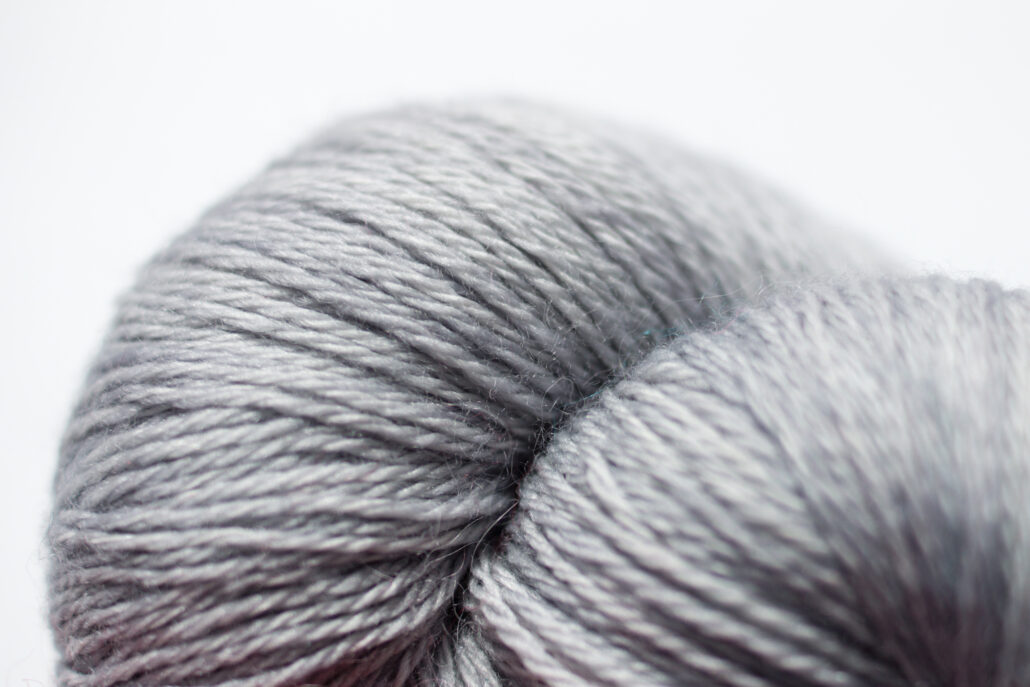
- 100% superwash merino*
- light fingering
- 500m / 547y per 100g
* can be machine washed on a wool or gentle cycle at low temperatures, but hand washing is recommended
Eternity Rose
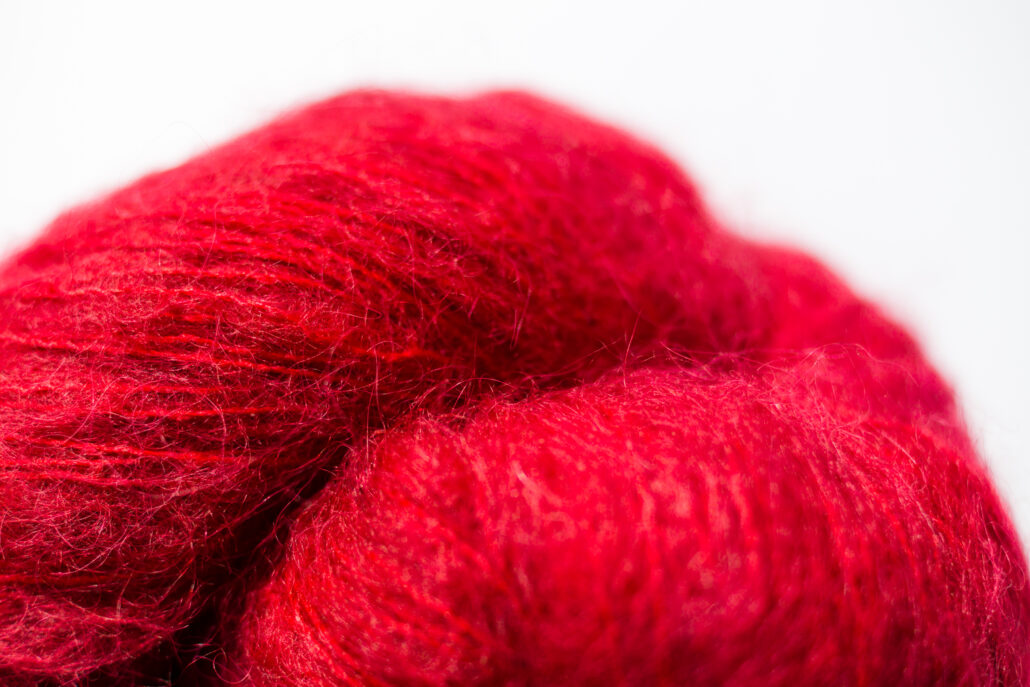
- 74% baby suri alpaca, 26% mulberry silk*
- laceweight
- 300m / 328y per 50g
* non-superwash yarns should be hand washed with a gentle detergent
The first thing I was struck by was how well the colours complemented each other. I already knew Sam has a great eye for colour, but seeing these two together really brought it home. Often when hand dyed yarns look good together it’s because they use the same dye colour so there’s a certain amount of matching and cohesion going on, but with these it really is a case of getting each colour just right so they work together beautifully.
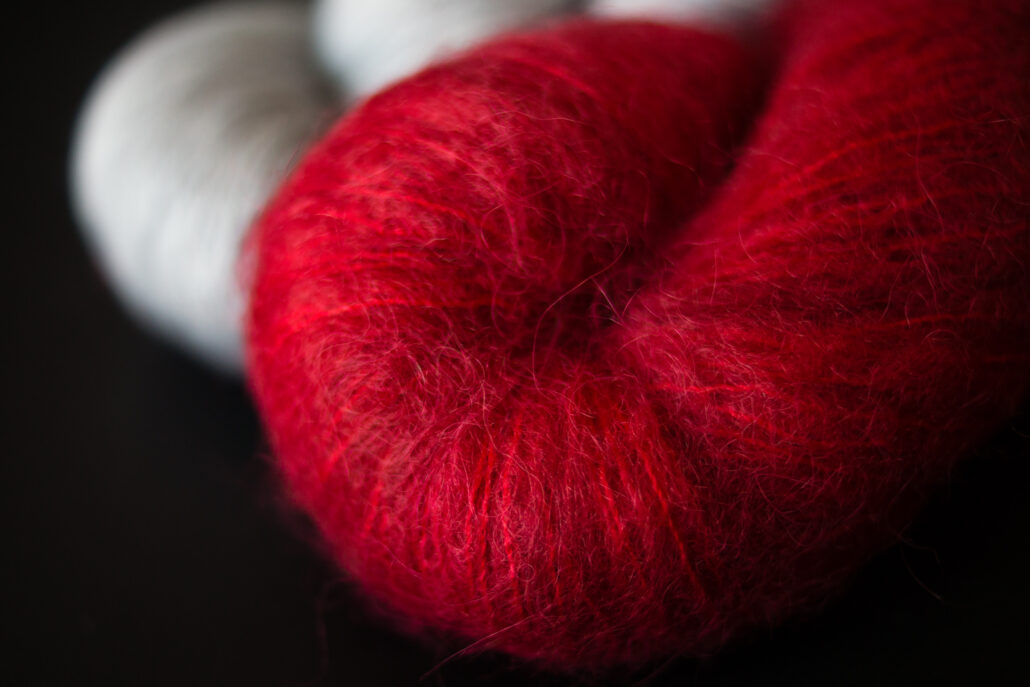
I got the swift and winder out as soon as I was done taking photos. Both yarns wound easily; they were neatly tied and twisted and gave me no trouble, even though the suri is a little slippery. (That’s the silk – and it’s a good thing! It makes it beautifully smooth to work with.)
After squishing it for longer than I’m prepared to admit to publicly and even giving it a good sniff (it smells SO GOOD), I cast on for a swatch. Impatient person that I am, I dove straight in with holding one strand of each. And then switched to holding the suri double. And then did a bit with the merino on its own.
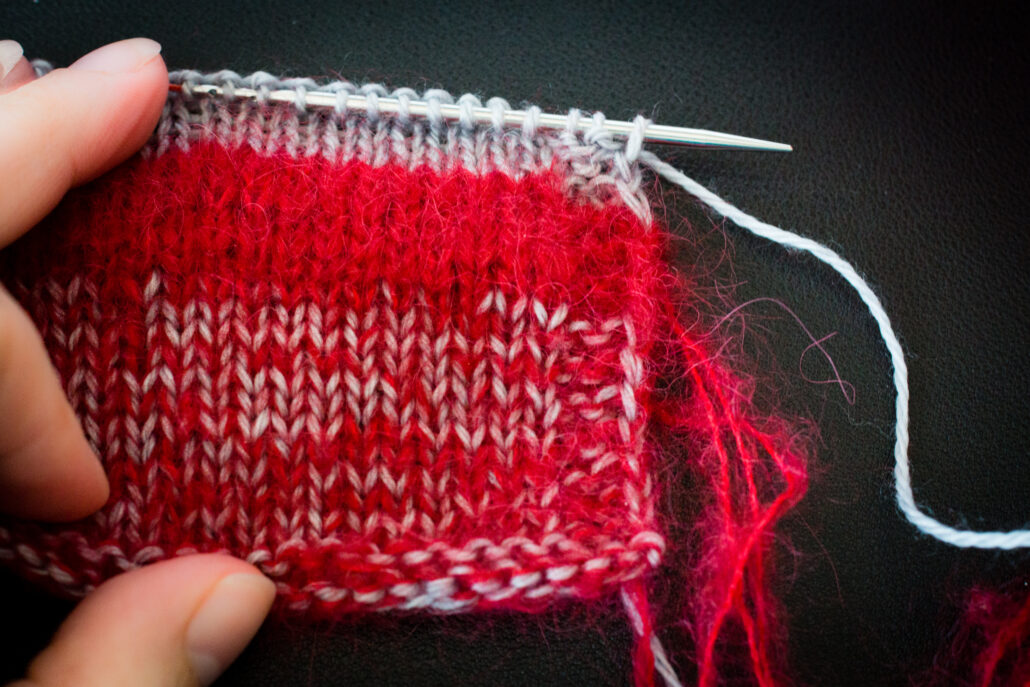
I knit all of these combinations on the same pair of 2.5mm needles. I could definitely feel the different densities between each section, but none of them felt too loose or too tight. And that stripe of suri is one of the softest things I’ve ever knit. I know “soft” isn’t a helpful descriptor, so let me expand on that a little bit.
If you read my post about microns, then you’ll already know that baby alpaca doesn’t come from baby alpacas, but from a specific part of the alpaca (usually the chest) and it has fewer microns than normal alpaca, which is why it generally feels softer – smoother, fluffier, finer, less coarse. The surface of the strand is literally smoother. What you might not know is that Suri is a particular breed of alpaca and, unlike its Huacaya counterpart, Suri alpacas make extra smooth fibre. So “baby suri alpaca” means “about as smooth and silky as alpaca gets”. And then for this yarn, it’s mixed with actual silk. And not just any silk – mulberry silk, which is the highest quality silk there is.
So really, when I say that this suri is “soft”, that doesn’t cut it. Not one bit. Baby suri apaca is around 19 microns; silk is around 10-13; put them together and you’re in the mid teens. Those fibres are smooth with a capital smoo.
Which probably explains why I spent the next four days carrying my swatch around in my pocket, touching it and knitting a row here and there.
It took me maybe thirty whole seconds to decide that I absolutely had to design a pattern with these yarns. I’d had a coupe of ideas before the yarn arrived, and I intended to swatch to see which of them would pan out with the most success.
But I shouldn’t talk about that just yet.
Instead, let me show you my finished swatch. I owe you an apology – it’s not as large as I’d originally intended, and that’s because one of the ideas I had was Definitely Absolutely Most Surely going to work, and I was impatient to cast that on and get started. (As I type up this blog post, the pattern is blocking in the conservatory. Please spare a thought for how desperately I want to tell you all about it, and how restrained I am being.)
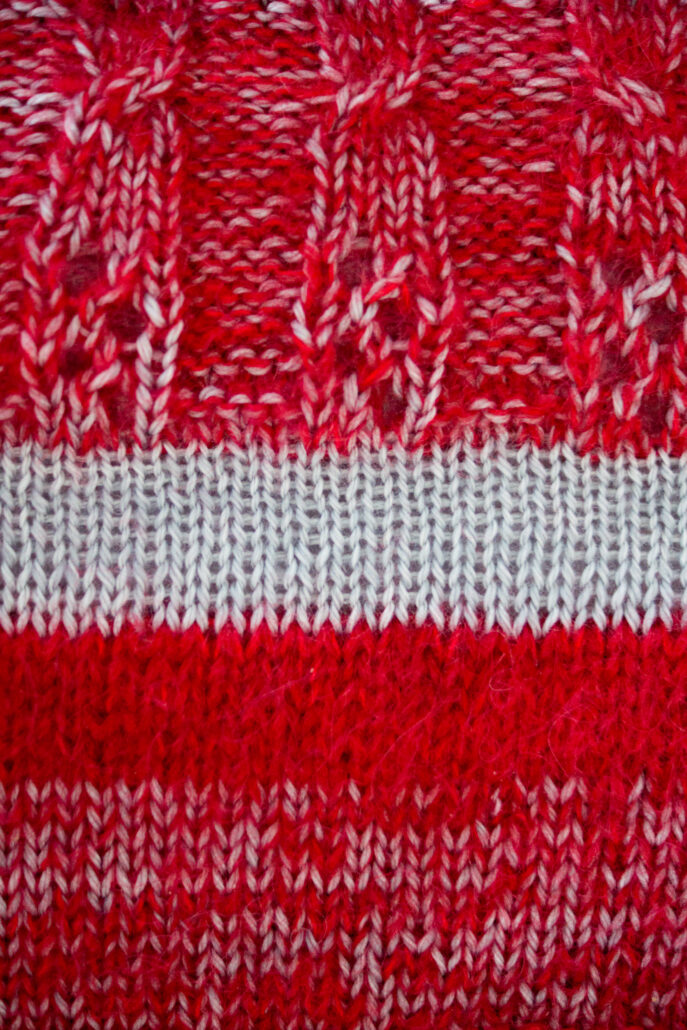
From top to bottom:
- cables worked using 1 strand of each
- eyelet ribbing worked using 1 strand of each
- stockinette worked using 1 strand of merino
- stockinette worked using 2 strands of suri
- stockinette worked using 1 strand of each
If that eyelet lace pattern looks familiar, congratulations on your great eye! It’s the same pattern I used on Rosehill, and I wanted to swatch it to see how it looked in these yarns. I’m calling that a roaring success!
I think all of these look pretty great, and as I said earlier, I was really happy with how I could transition between sections on the same size needles. I think these soulmates will work brilliantly for any pattern that calls for holding-with-a-strand-of-mohair, bringing both warmth and luxury.
One tiny note of caution: I spray blocked my swatch, and when I dabbed it dry with some kitchen roll, there was a little hint of pink on the paper. If you’re doing what I did and mixing colours, I’d advise against wet blocking, just in case it runs. Stick with spray blocking instead. This is absolutely not a criticism – it’s a risk we take with all hand dyed yarns, and one that’s well worth it in my opinion – but I’d feel remiss if I didn’t mention it.
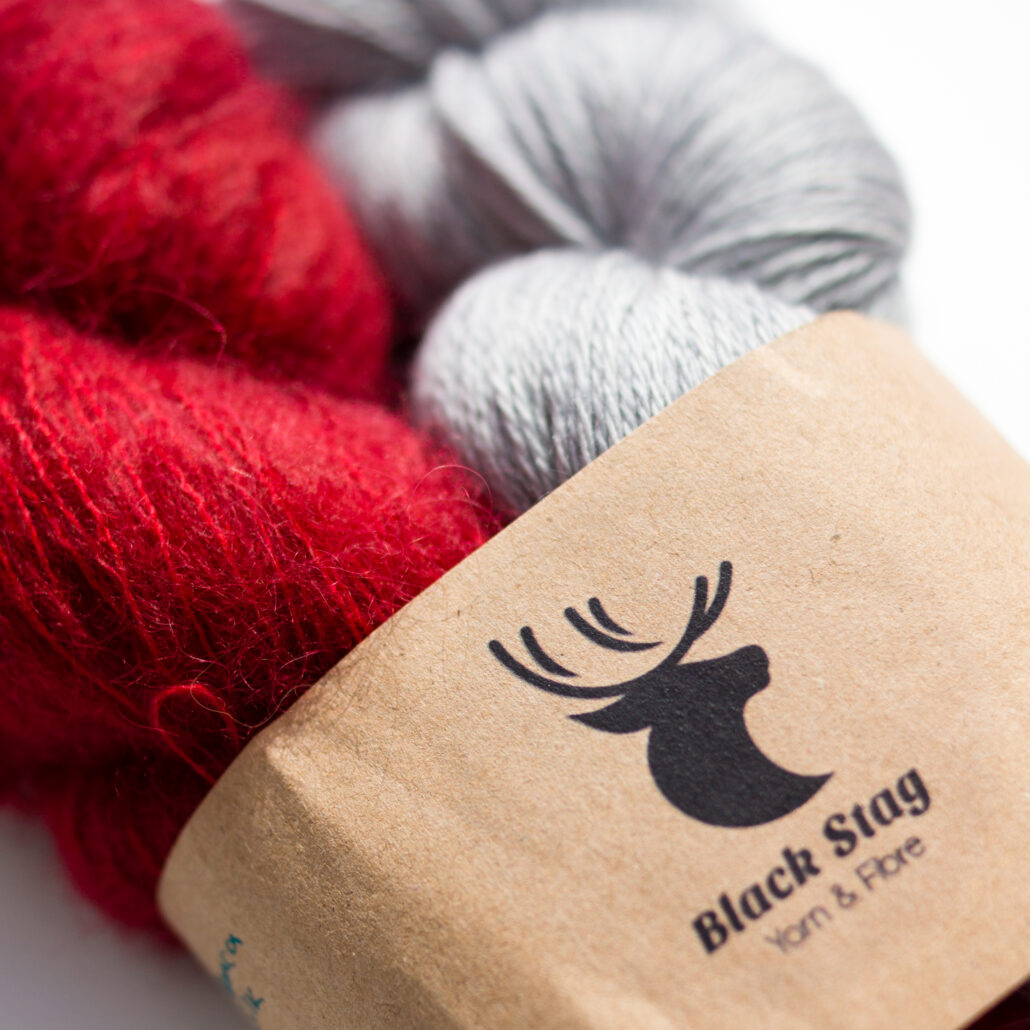
The Soulmate collection is available for pre-order from 18th June.
Make sure you’re following me on Instagram or Facebook and subscribed to the newsletter to be first to hear about the pattern that these beautiful yarns were turned into!
…
…
…oh, go on then. One sneak peek.
